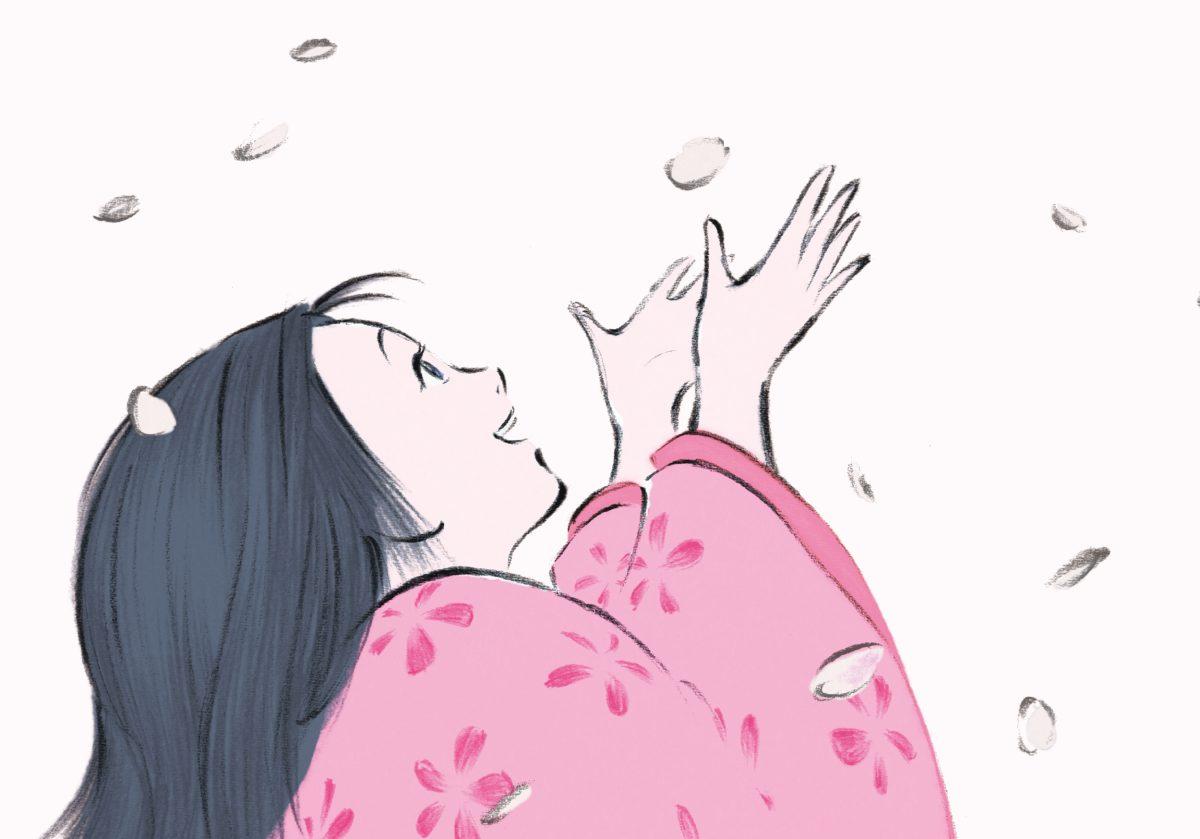Isao Takahata, one of Japan’s master animators, has created works over the last few decades that have hit on the joys and difficulties of reality by those who must deal with it: Grave of the Fireflies (1988) tells the story of two siblings trying to live after the constant fire-bombings of Japanese cities by the US during WWII; Only Yesterday (1991) centers on a young woman’s growth through puberty and beyond as she is finally able to be and understand herself; My Neighbors the Yamadas (1999), by far the funniest of the bunch, centers on the tensions that run through one almost sitcom-like family. In The Tale of Princess Kaguya, a gorgeously animated work, Takahata gives us one of his strongest views on the feminine experience, hitting certain hardships harder than he ever has before. By Zachary Phillip Brailsford
Princess Kaguya begins with a bamboo-cutter finding a magical little girl inside of a bamboo shoot, whom he brings home to his wife. Unnaturally, the girl begins to age at a rapid pace, and, over time, she learns to love the countryside and the friends that she grows up around. After finding gold and fabrics within other bamboo shoots, and, because of his insistence on treating the girl as a being of power, the bamboo-cutter and his wife move Kaguya to the capital as a teenager, where she is instructed on how to get rid of her carefree ways and be a good, obedient princess. Through her father’s promoting, she becomes the most sought-after princess in the land. But, by being pulled away from what she loves and kept within the confines of her house, the stress begins to take its toll, causing a desire for her past and a fear for her future.

Like the great Mikio Naruse, whose films dealt with the hardships women faced in modern Japan, Takahata gives us a scenario in which, for the woman, there is no escape from the male-dominated society — or rather, there is an escape, but only if she leaves behind that which she loves dearly. The film stresses certain aspects of her struggle. For instance, her father wants her to marry a nobleman, but she, utilizing her power as a royal, turns them all away and then is criticized by society and her family (who is not royal) for doing so. Only by bowing to the pressures of those around her (essentially losing her power) is she allowed to utilize that power.
And then there is the ending, which opens the story into new realms beyond our own. Without spoiling anything, I will say this: I was shattered by Takahata’s representation of an event that is, by mostly everyone, considered a very happy instance, because it is shown in this case as perhaps the most sad thing that could ever happen. I sat in the theater completely unmoving after those final minutes, and tears began to stream down my face. Oh, what the girl had to face in her search for happiness, which, in her reality, was entirely unattainable! The film left me more devastated than any other has left me this year, bringing with it thoughts about women’s roles in patriarchal societies, religion, freedom, nature, nostalgia, the ever-looming terror of what is to come and much more. Of that I have seen, The Tale of Princess Kaguya is the best movie of the year, and one of the few with a point of view that deserves and needs to be observed.











































